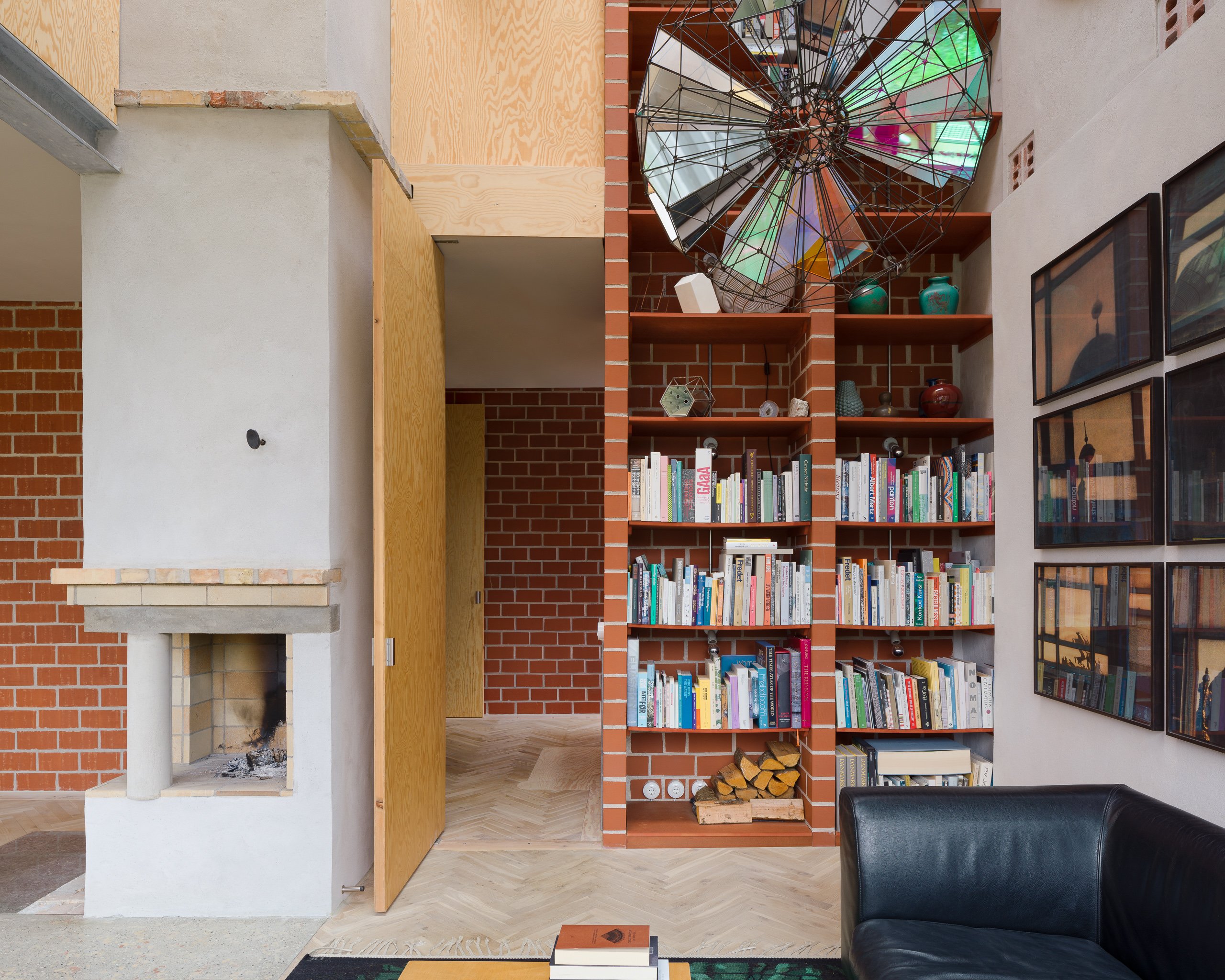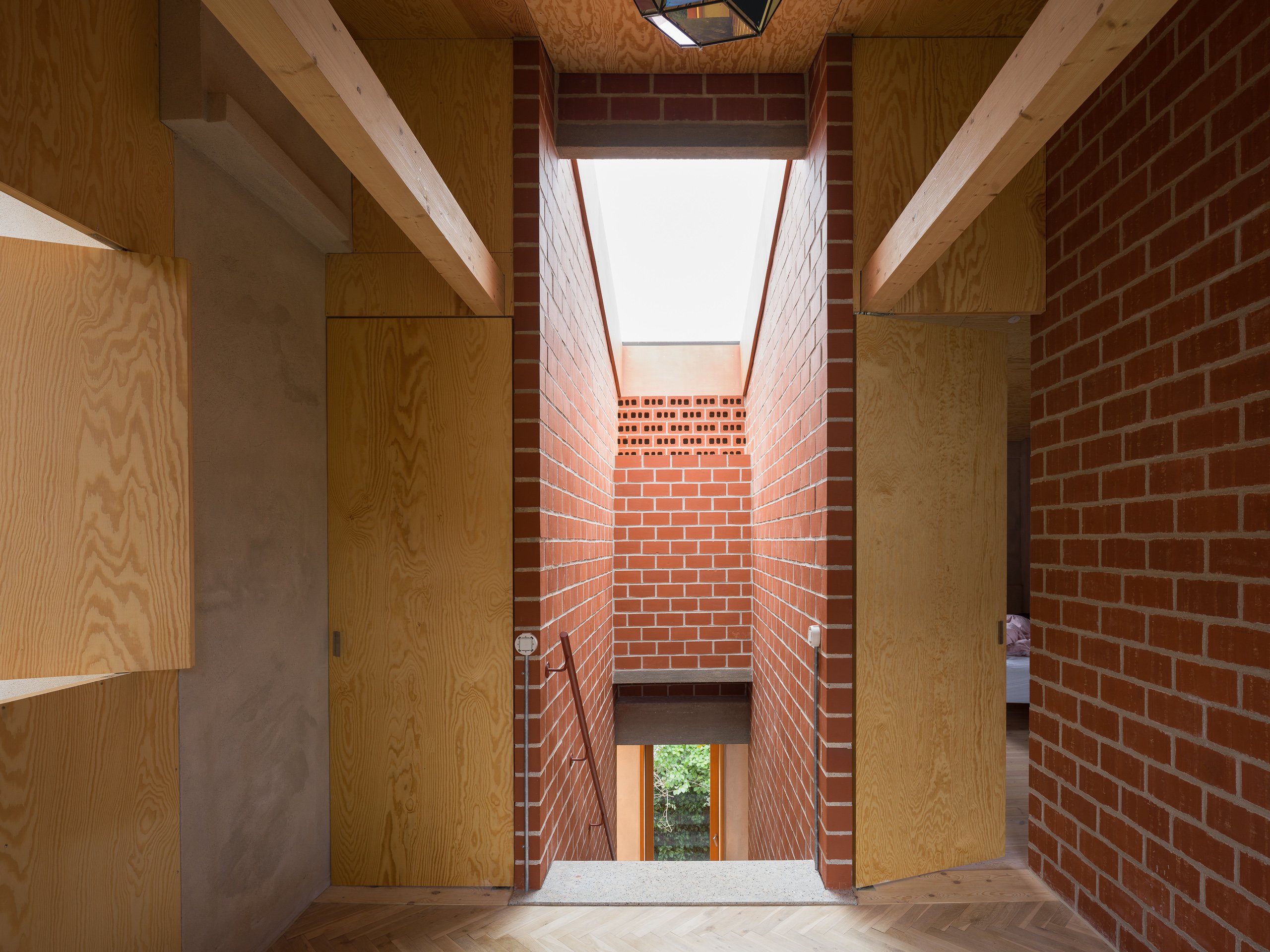
Not long ago, I worked closely with the architect Søren Pihlmann when he was transforming a villa just north of Copenhagen. I was the client, he was the architect, and, because architecture is also my field—I am an art historian, writer, and curator—we decided to frame our collaboration as a project where we both would contribute to the processes essential for its artistic development.
The building was a rather bourgeois residence from the 1950s, a time characterized by the tradition-leaning postwar environment, a limited palette of materials, and very conservative family norms. In other words, it was not a particularly interesting piece of architecture. But that is precisely why the aforementioned processes were so important: because preserving and transforming the existing is not only about “beautifying” based on current preferences, but also about looking with new eyes, changing one’s mindset, and seeking potential in what is already there.
The work proceeded over three phases. First, we spent a long time investigating the building: its current materials, construction, site, and location. We discussed and explored the values at stake, which are crucial as they establish a philosophical foundation. Our focus wasn’t on demands and desires for layout and comfort—and we made no renderings, as they tend to lock in the process—but rather on the underlying principles that, during the construction process, served as a compass we could always return to when making important decisions.
In the second phase, the architect came up with a comprehensive approach for the transformation itself based on three towers running through the entire building, from basement to attic, constructed from discarded bricks. This method dictated the home’s layout, with basic functions such as water and storage hidden inside the walls, and with the rooms as the “leftover material” those functions create.
The last phase was crucial. We were on-site as much as possible, alongside the craftspeople, for more than a year. The construction site became our studio where we could, at scale, explore and experiment with what worked. It is impossible to imagine everything through computer drawings, and craftspeople often encounter unforeseen situations in these planning stages. We would ask them to try something, and often, they had to redo it several times until the vision was achieved.
All together, the project was about tactility, palettes, hierarchies, readability, ethics, and degrees of processing. And it was about understanding that in the future, we need to let go of the notion that we can control and pre-plan everything down to the smallest detail, and to instead surrender to what is, and listen with much greater sensitivity to the materials that already exist. One could also call this developing a sense of place that acknowledges all voices—those of the materials, nature, and history—and the rights that every physical thing has by virtue of its existence.

Today, in Denmark and beyond, there is a strong focus on preserving existing building stock, as demolition and new production are a huge burden on the environment. This conservation is a legal, economic, and political issue. When done in the truest sense of the word, it is also very much a cultural-aesthetic issue.
How do we reach a point where we want to preserve what we find ugly, boring, and outdated? It is not enough just to know that it is the best for the planet’s future, because knowledge alone does not always change our behavior. We need to be emotionally awakened and engaged, and we must feel a desire for the new opportunities and images presented to us. We need to change our mindsets to start seeing the value in repair, in showing care, and in feeling attachment. And we need to recognize the significance of being able to carry stories forward.
Therefore, we must use our climate awareness not only to see catastrophes, but also new opportunities: Less comfort does not necessarily mean less well-being. Restrictions can be heartening challenges. “Making do” can inspire us to look at other forms of quality of life such as more time, more presence, and a reduction in many years of overconsumption. The point is that we do not need to see this as a reduction in the ease of our everyday; it is a shift in the values and elements long associated with our perceptions of the good life.

That house north of Copenhagen can help illustrate some of these shifts. For instance: New is not the same as best. In the past 50 to 70 years—during what we call “Modernism,” which is closely linked to a significant increase in welfare in the Global North—we have equated the “new” with the “best.” New is better than old, and when something breaks, it is easier to throw it away and buy something new than to repair it. Things that look like they just came from the factory are a mark of quality.
A shift could be that we start to see the enrichment in objects having traces of previous use, because it shows how one generation takes over from the next and offers a visible trace of life, in which different destinies and stories intertwine.
Maintenance is also a form of care. For a long time, we have valued the label of “maintenance-free”: It gave us a sense of security that our homes and belongings could last forever, and that we were thus saved from trouble. The shift here is that we now know this was an illusion. Nothing is maintenance-free. Everything breaks down, even if very slowly. And the maintenance-free often cannot be repaired, promoting a throwaway culture. To have a lasting relationship with our homes, they must be reparable, and this leads to much greater presence—because we are now forced to engage in processes that require us to consider how to provide care.
In Scandinavia, we have among the largest number of square meters per inhabitant. In just a few decades, the ratio has increased by about 30 percent. The shift is about moving from quantity to quality: appreciating good craftsmanship, valuing the time and care that architects and craftspeople put into their work, and experiencing, for example, the smell and feel of a beautiful piece of wood that is so pleasant, it can easily compensate for the space you previously longed for.
Quality of life is more than comfort. Think of temperature: Many people have long aimed for a comfortable 70 degrees in every room. In colder regions, they turned up the heat, and in warmer areas, air conditioning became indispensable. Changing this does not mean these individuals should suffer from rooms that are too cold or hot, but rather, that they should embrace the climatic variability they are naturally embedded in, but have almost forgotten after spending many decades as indoor people. For we are living beings who breathe in coexistence with the planet’s other species. We are atmospheric beings who relate to the changing seasons and weather, and we have sensory systems that enable us to experience them.
If we make an effort to discuss, exemplify, decode, and illustrate such shifts in our experiences of quality of life, we can more easily define and make the necessary transitions. We need to explore what we value. We know enough about planetary boundaries, tipping points, and emissions. Now we need to be emotionally awakened to desire a new and different way of existing. Architecture can do that—as affect, as physics, as body, and as space.